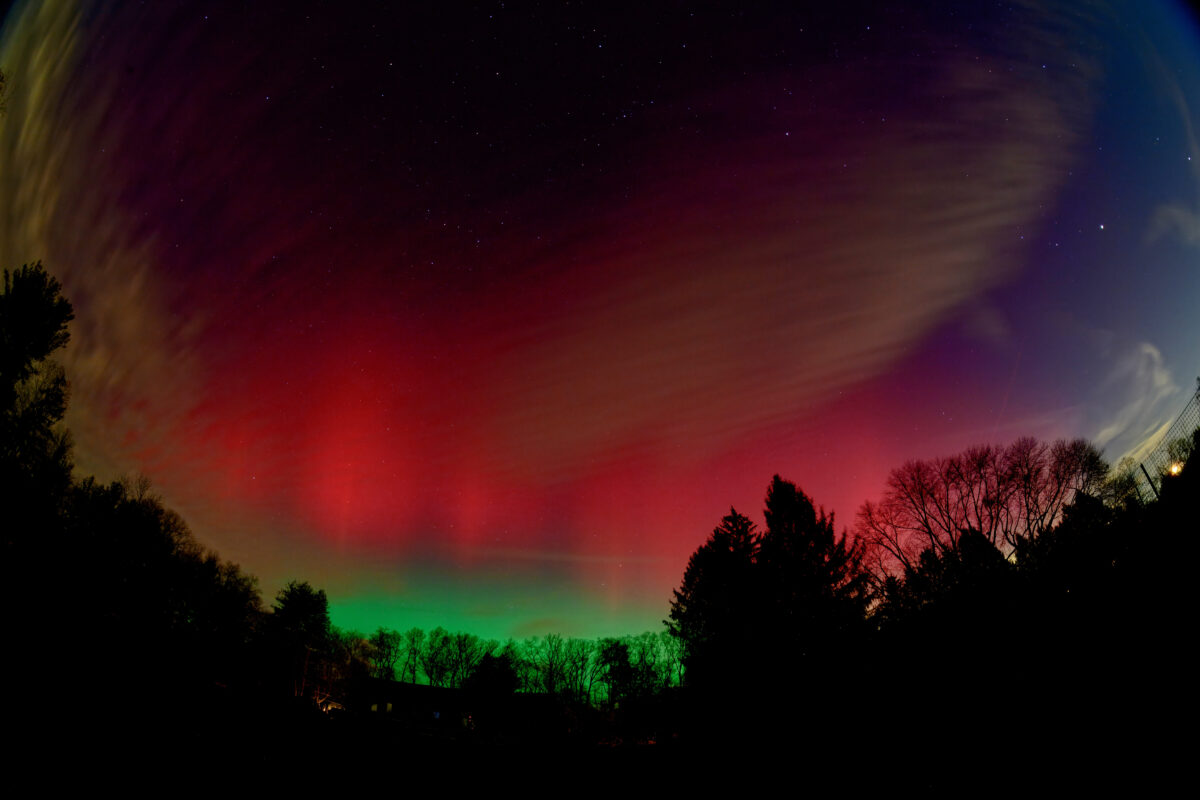Northern Lights Over New Jersey
I received NOAA Space Weather alerts that there was a high potential for strong geomagnetic G3/G4 activity for the next few days. Several strong solar flares had ejected charged particles directed toward the earth. It is unusual to see Northern Lights (Aurora) in New Jersey. The last time there was a strong display that I could see from my backyard was on 11-October-2024. I hoped for a chance to view and photograph the northern lights from my backyard again. I checked both the Clear Skys report for the Sourland Mountains, and the National Weather Service local forecast which indicated mixed clouds with some clear skies for the night. I set up cameras with wide angle lenses and a 360° camera to record images over the night. It was cold and windy, so I wasn’t going to stay out all night by myself. Rather let the cameras do their work then download and view the images the next morning. The cameras were set up with external batteries and lens warmers (to prevent condensation on the wide-angle lenses). It seemed like every time I went out to check the cameras there were fast moving clouds and I wasn’t sure if I would get anything other than images of nighttime clouds.
The next morning when I started to download the images, I did see some red and then green colors in some of the images. The following time-lapse videos show the Northern Light display looking straight up and north over my house. During the night there were several displays of both red and green lights starting a little after 20:00. The high winds kept the clouds moving across the sky. The brightest display occurred a bit after midnight. After that the clouds blocked further displays.






